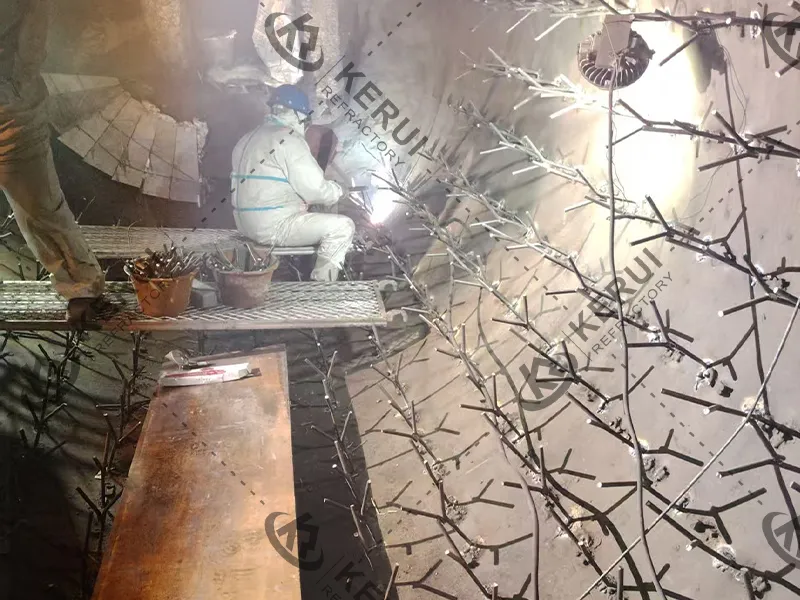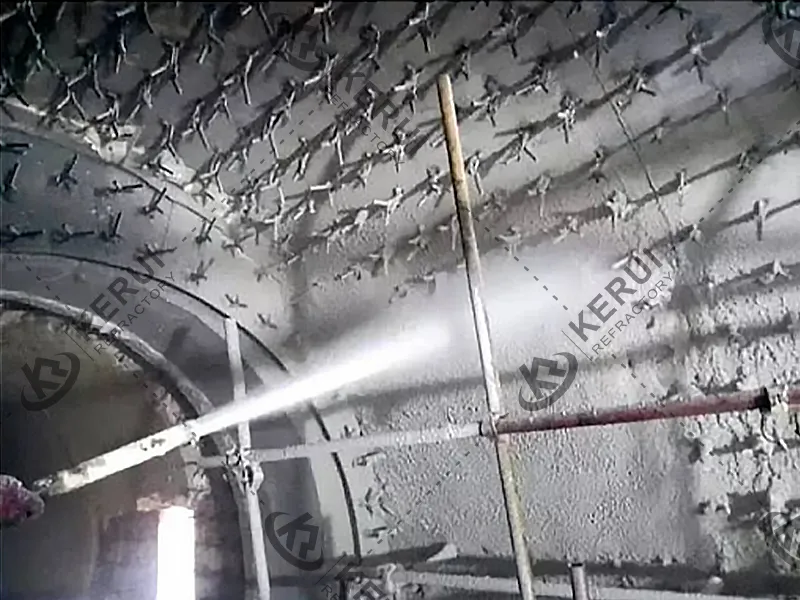Surface Preparation Fundamentals
Proper surface preparation ensures optimal refractory cement adhesion and performance. First, thoroughly clean the substrate, removing all dust, oil, and loose particles. For metal surfaces, remove rust using grinding or sandblasting. For existing refractory surfaces, chip away damaged material and create a rough texture for mechanical bonding. In addition, pre-wet porous surfaces slightly to prevent rapid moisture loss from the cement mix, but ensure no standing water remains.


Mixing Consistency for Different Applications
Achieving the correct mixing consistency depends on the application method:
- Troweling: Stiff, clay-like consistency that holds shape
- Pouring: Creamy, self-leveling consistency
- Spraying: Fluid yet cohesive mixture
Moreover, mix in small batches that can be applied within 20–30 minutes, as refractory cement begins setting quickly.
Application Methods and Techniques
Vertical Surfaces: Apply in 1–2 inch layers using firm upward trowel strokes. Compact each layer thoroughly before applying the next. Use supporting frameworks for thicknesses exceeding 3 inches.
Horizontal Surfaces: Pour mixed cement into forms, then use vibrators or rodding to remove air pockets. Screed level and finish with a steel trowel.
Complex Shapes: For intricate molds, apply thinner layers using specialized tools to ensure even thickness and prevent weak spots.
Curing and Drying Best Practices
Implement systematic curing:
- Initial 24 hours: Maintain 90–95% humidity under plastic covering
- Days 2–3: Reduce humidity gradually while protecting from direct airflow
- Days 4–7: Continue air drying at ambient temperature
- Final heat-up: Gradual temperature increase not exceeding 25°C per hour
Quality Control and Troubleshooting
Monitor:
- Uniform color and consistency
- Proper adhesion to substrate
- Absence of cracks during initial drying
- Consistent thickness
Achieving Professional Installation Standards
Mastering refractory cement installation requires understanding the relationship between surface preparation, mix consistency, application technique, and controlled curing. Therefore, following these professional standards and leveraging technical support from Kerui Refractory ensures durable, high-performance results in high-temperature environments.


